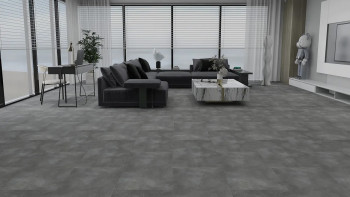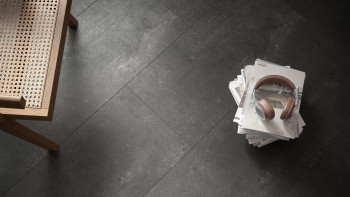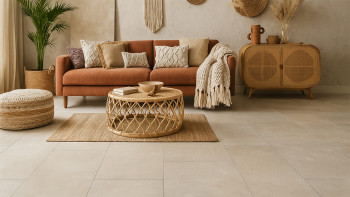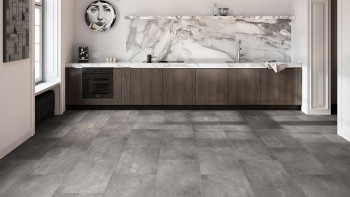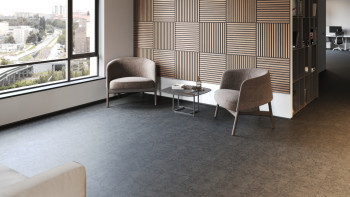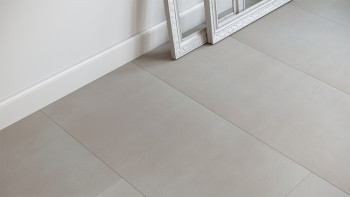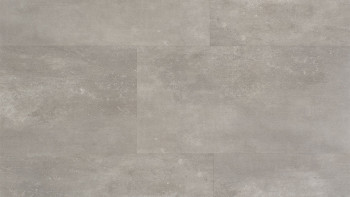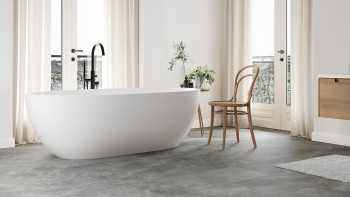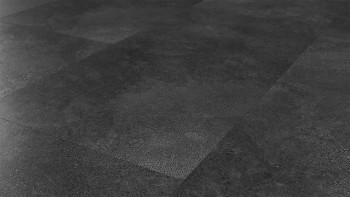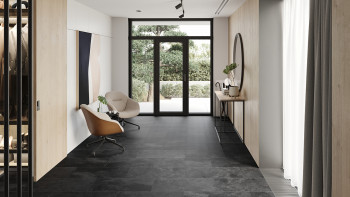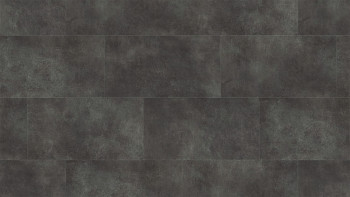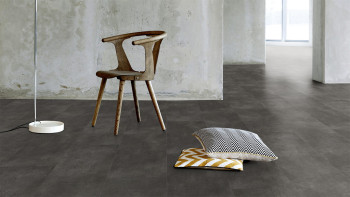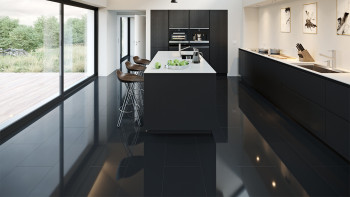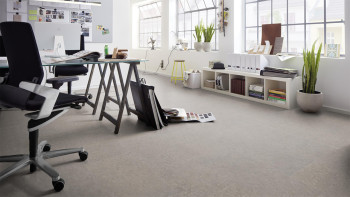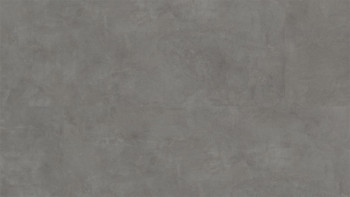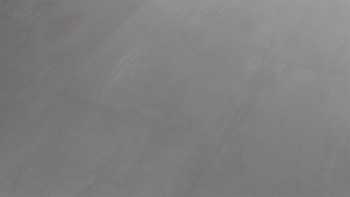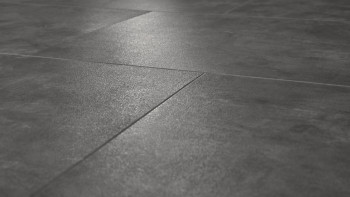Tile-effect vinyl – an authentic imitation
Tile-effect vinyl flooring is a convincing, modern and affordable alternative to tiles and provides you with a lovely warmth underfoot. The natural stone structure imitates real tiles. An elastic surface is easy on the joints and effectively dampens walking noises.
"What do you mean, these aren't real tiles?" Your guests will be surprised when you explain that it’s actually designer vinyl. Thanks to modern surface treatments, vinyl floor tiles really can look like their natural stone, marble or slate counterparts.
Versa-tiles
The resistant and durable properties of vinyl are great at home or also as a stylish stone floor in commercial spaces.
Tile-effect vinyl is a winner:
- keeps feet warm
- cost-effective, robust, easy to clean
- quiet, easy on the joints, elastic
- authentic look and feel
- quick and easy to install without professional help
- versatile use in private homes, businesses and commercial buildings
- huge selection of vinyls in both gluing or clicking variants
An extensive selection
planeo designer vinyl flooring also comes in a solid vinyl version which is waterproof and ideal for damp rooms such as bathrooms and kitchens. With added pressure-resistant core board, you can enjoy the warmth of vinyl in busy rooms like the living room, bedroom or hallway.
In the planeo online shop you will find high-quality vinyl floors in a deceptively real tile look for clicking or gluing. These meet a high standard of hygiene and are durable and sustainable. Maintenance is also very easy – most stains can be cleaned simply using water. For heavy soiling, we recommend the use of special vinyl floor cleaners. Be inspired by our range of tile-look vinyl floors and experience an authentic stone look at an affordable price.
Our services
At planeo you will receive comprehensive advice and support. Take advantage of our comprehensive service :
- FREE order of up to 5 samples
- FREE storage for up to 3 months
- professional expert advice until 5 p.m.
We are happy to support you with your projects – you will find what you are looking for in our online shop!





